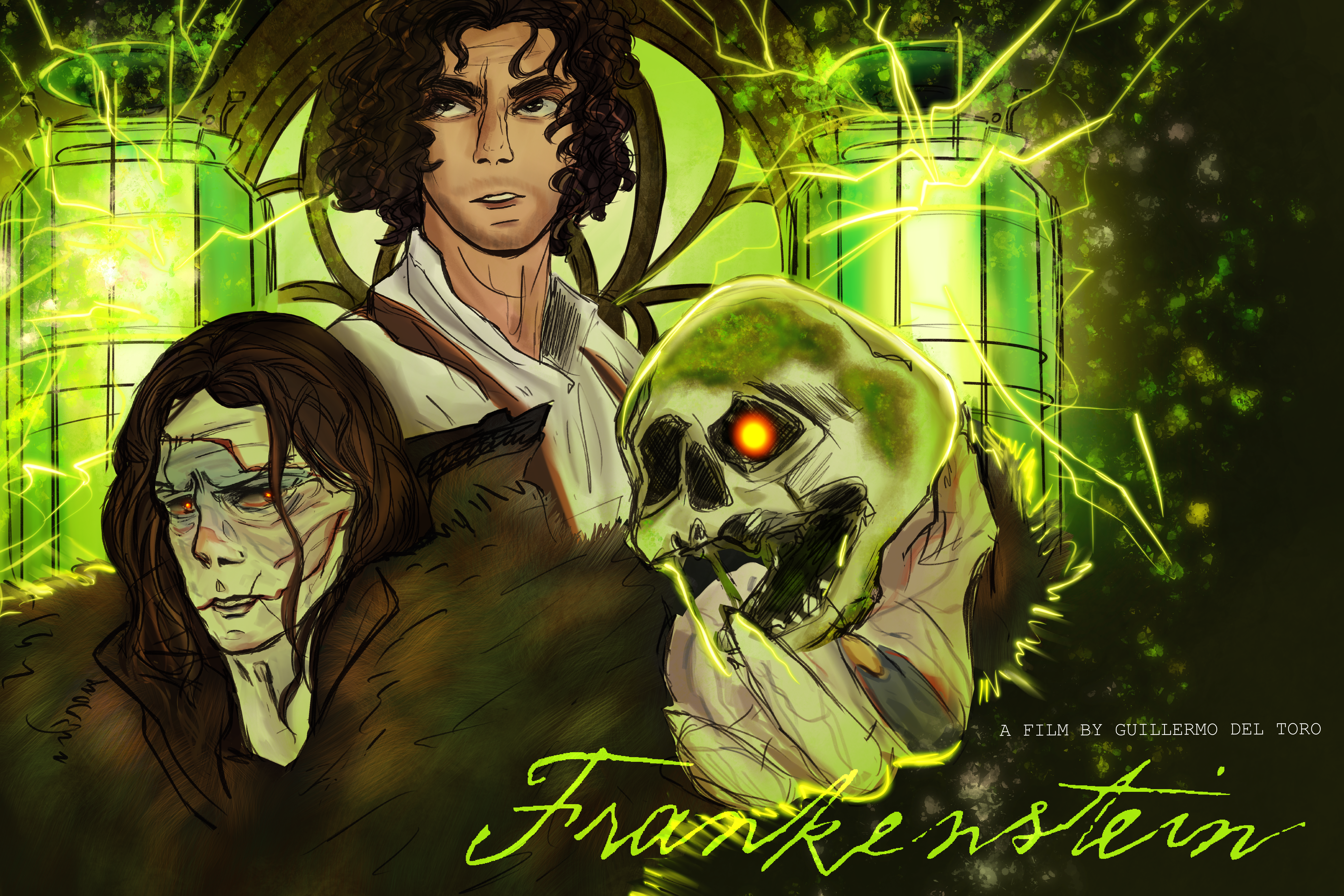When I heard that yet another film adaptation of Frankenstein was releasing on Netflix, I had quite a few doubts. I was expecting another poor use of the character of Victor Frankenstein and an exaggerated monster that leaned far too much into the horror aspect and dropped the ball on the philosophical implications of the source material. But when I discovered that legendary Guillermo del Toro was directing this film, I was eager to discard my earlier assumptions.
The movie, like the novel by Mary Shelley, begins at the story's climax, where the Creature, played by Jacob Elordi, terrorizes an expedition in the North Pole. This initial scene hooked me as I was surprised at the callback to Shelley’s original frame narrative. The following part of the film was cut into two separate parts, Frankenstein’s story and the creature’s.
In the initial act, the growth of Victor Frankenstein, brilliantly portrayed by Oscar Isaac, was put on display. His past neglect and grief were captured in a way that made the character understandable in a way that many who have not read the book have never considered. This origin story was supplemented with the curious relationship with Elizabeth, played by Mia Goth. The second half was a profound account of the creature existing independently, yet feeling out of place and unnatural.
Unlike the novel, there were newly introduced themes of immortality introduced, as the creature was unkillable. This change brings an interesting but unorthodox approach to the conclusion. I disliked that the monster has a heroic triumph that redeems him despite his unnatural existence. Although the solemnity of Shelley’s ending, there was this gripping tension that the Monster was not supposed to exist which is absent from the ending.
Despite this, the set design was beautifully gothic with large scale towers and mountainous regions. Adding to the detailed love put into this movie, Frankenstein’s laboratory and the ship were both practical set pieces that were created for the film requested by the director. He said, “I don’t want digital, I don’t want AI, I don’t want simulation, I want old fashioned craftsmanship.”
The time accurate costumes were exciting to view, from the outfits worn by Victor Frankenstein and his monster to the elegant dresses of Elizabeth. All this, combined with the blue tinted film, evoked the eerie winter atmosphere that has been beloved by readers for over two centuries.
This piece, with a budget of $120,000,000, was truly a passion piece, being in theaters for three weeks and then going straight to streaming. This far surpassed the small budget of its predecessor Frankenstein (1931) which had a budget of $291,000.
This adaptation was phenomenal, despite its small inaccuracies (like the use of dynamite 5 years before its invention) and the small creative changes made from the novel. I loved it because it asked the classic, engaging questions that merge scientific thought with morality. It covered themes of man vs. god and the existence of life birthed through death that most modern stories neglect. Mary Shelley’s masterful narrative and its thoughtful topics are now more accessible than ever, and we can thank Guillermo del Toro for that.
Photo Courtesy of Alexandra Castillo




